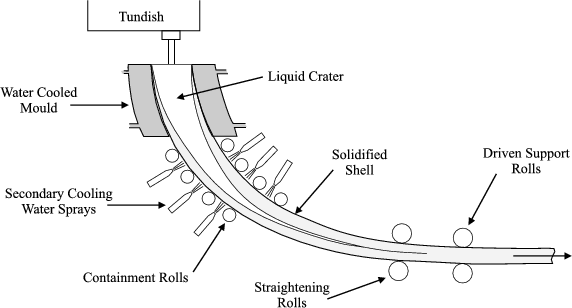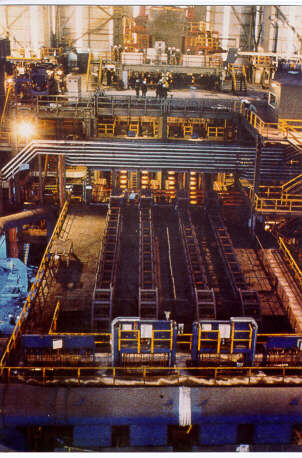|
You are here :
Control System Design - Index | Book Contents |
Chapter 2
| Section 2.3
2. Introduction to the Principles of Feedback
2.3 A Motivating Industrial Example
To make the above general discussion more concrete, we next
present a simplified, yet essentially authentic, example of an
industrial control problem. The example, taken from the steel
industry, is of a particular nature; however, the principal
elements of specifying a desired behavior, modeling and the
necessity for trade-off decisions are generic. Some details of the
example might not be quite clear at this early stage, but they
will set the scene for future work.
One of the products of the steel industry is a so-called bloom,
which is a rectangular slab of steel. Blooms are produced in a
process called a continuous caster. A diagram of an
industrial bloom caster is given in Figure 2.1. The
principal components of such a system relevant to our discussion
here are shown in Figure 2.2. A photograph of a bloom
caster can be found on the web page.
Figure 2.1:
Process schematic of an industrial bloom caster
 |
The tundish can be thought of as a large container that
acts as a reservoir for molten steel. A control valve regulates
the rate of flow of steel that enters the mould mounted under the
tundish. The mould, whose cross-sectional area equals the
cross-sectional area of the desired bloom, is open from above and
below. By intense cooling, steel in the mould is cooled to a
semi-solid state. In this state, it is sufficiently firm so that
the strand can be withdrawn continuously from the mould by rolls.
The resulting continuous strand is then subjected to further
cooling and finally cut into blooms.
Figure 2.2:
Continuous caster: typical bloom (left) and simplified diagram (right)
 |

Figure W2.1: Photograph of Bloom
Caster.
|